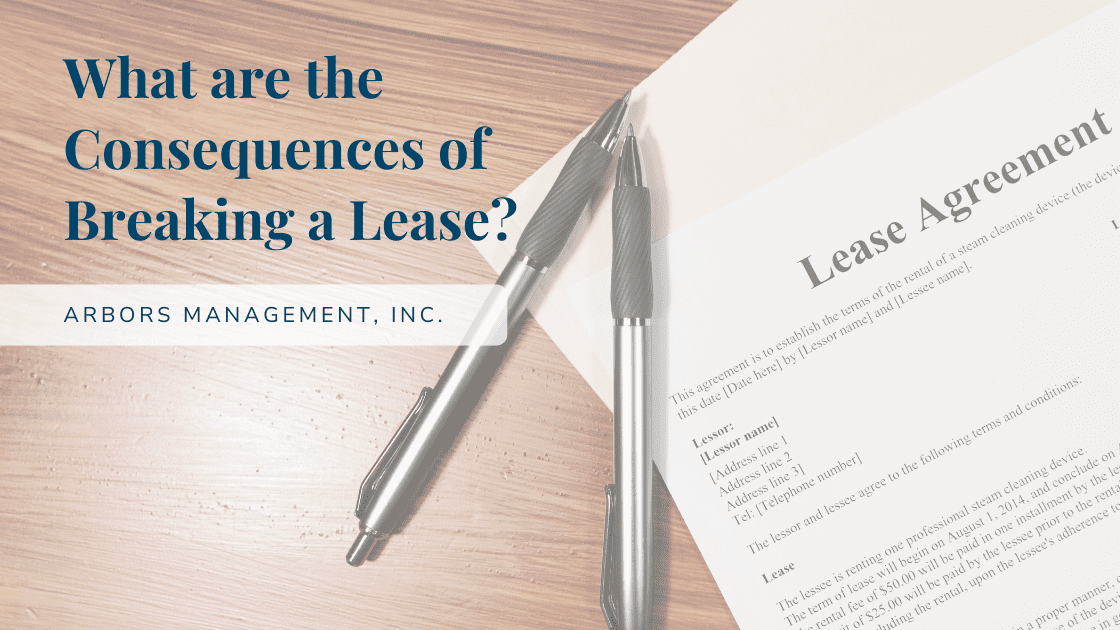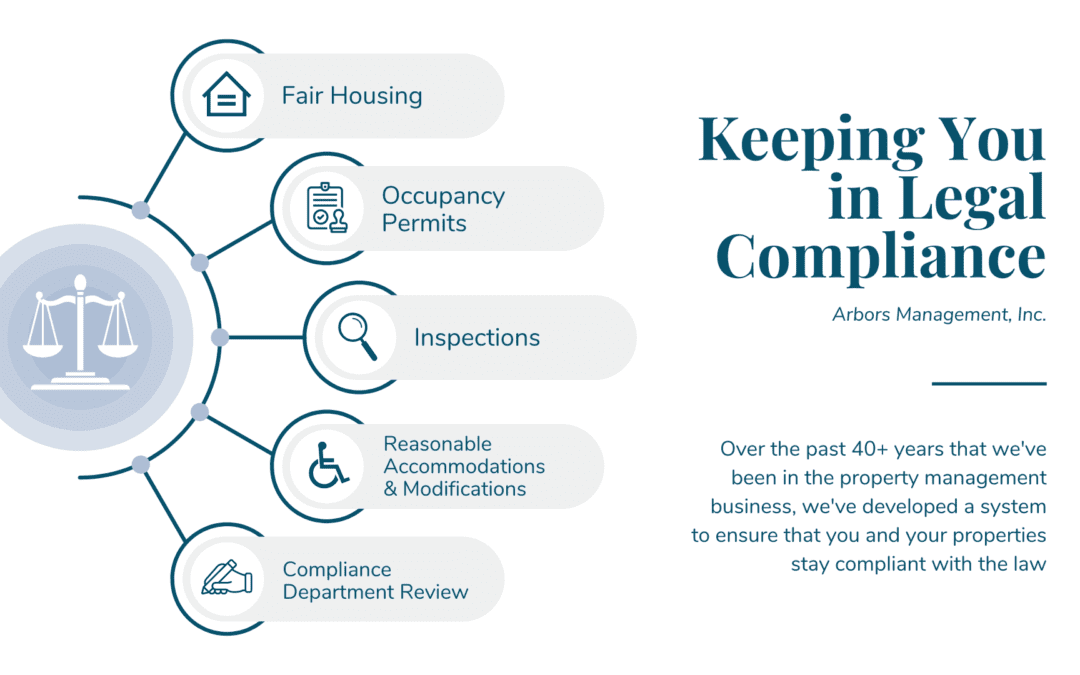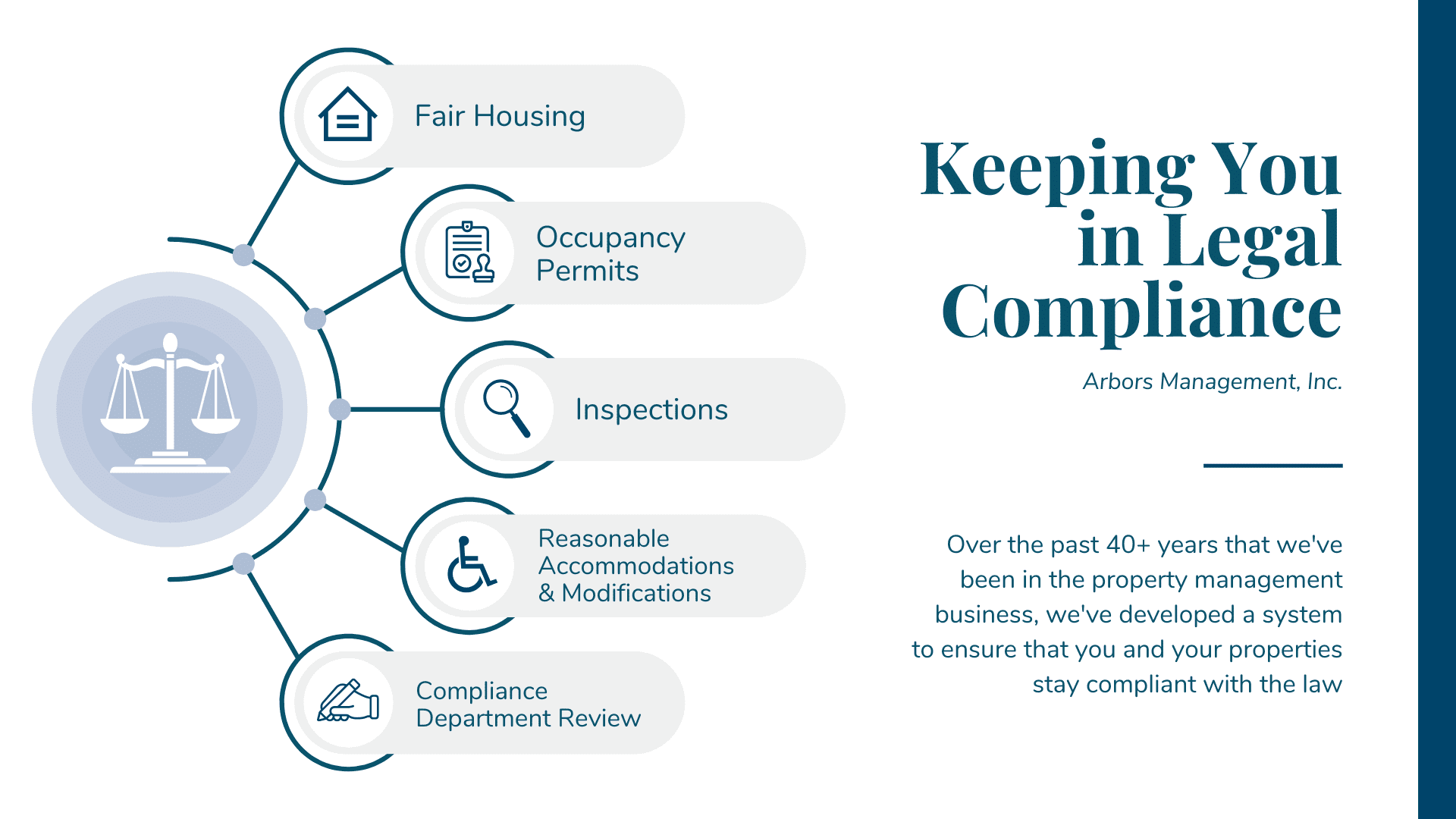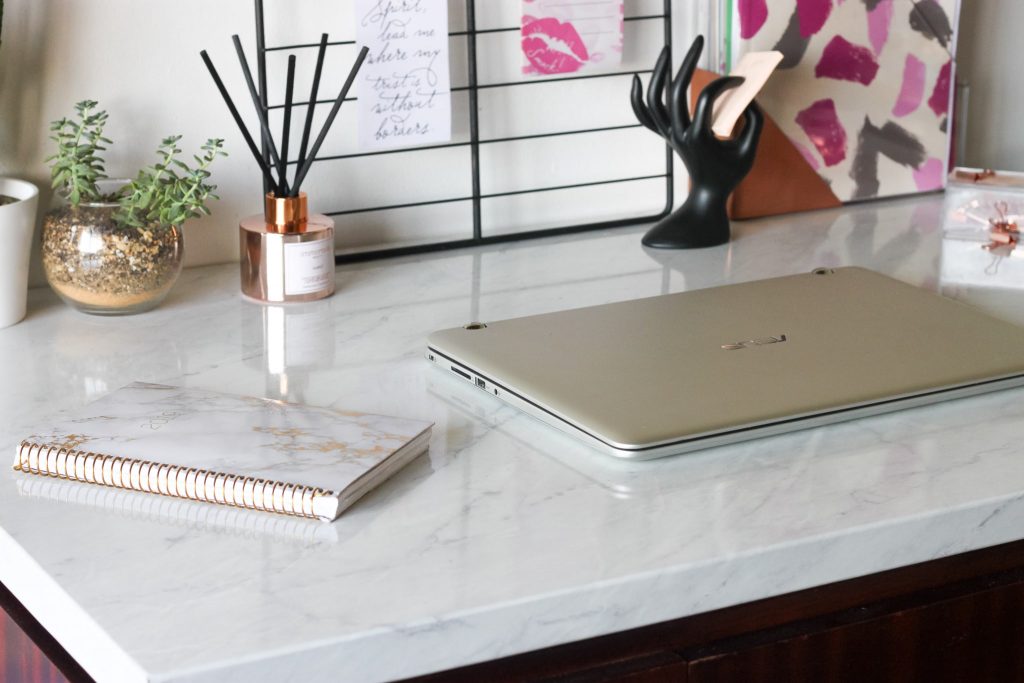
by Nicole Scimio | Apr 11, 2025 | Blog, Featured Posts, Owner Resources, Property Management Education, Tenant Education, Tenant Resources, Uncategorized
What Are the Consequences of Breaking a Lease?
By: Brady Merkle

What is a Lease?
When renting an apartment or home, the future occupants and the landlord will need to sign a lease before move-in.
A lease agreement (lease) is a legal document that binds parties to an agreement in which the resident is required to pay to live in housing provided by the landlord. The lease specifies the terms and conditions that both parties must adhere to for a specified period.
Here at Arbors, our lease signing process takes place online for the majority of our market rate units!
Once an applicant has been approved, our management team will send over the lease to the resident through our online portal. This allows our residents to sign and agree at their convenience – it’s simple and easy!
What Does “Breaking a Lease” Mean?
Sometimes the agreements made in a lease are not always followed, whether it be the fault of the occupant(s) or the landlord. When this occurs, it’s called “breaking a lease.”
Breaking a lease means that a party terminated the agreement before the end date of the specified term. The most common lease break is when a tenant moves out of the rental before the end of the lease.
Other instances of lease-breaking can include property damage, failing to pay rent, etc.
It’s also important to note that there is a difference between ‘violating’ and ‘breaking’ a lease.
A violation is less severe and occurs when one of the parties does not adhere to a specified portion of the lease. Examples include not maintaining housekeeping standards or disrupting other residents’ enjoyment of the property (ex: playing loud music late in the evening).
Multiple lease violations will often result in the landlord evicting the renter from the home.
What are the Consequences of Breaking a Lease?
While different management companies or landlords may have different penalties in place, breaking a lease often has financial and/or legal consequences.
For example, if a resident breaks their lease, the landlord may withhold the security deposit and charge additional fees.
Oftentimes, landlords charge fees in order to recuperate the unforeseen loss of income they incur with an unexpected move-out.
Additionally, fees can be charged to cover the cost of repairs for any damage caused to the unit.
These fees are typically depicted in an early termination clause within the lease.
Are the Consequences the Same with Every Landlord?
Every lease is unique. The fee structure may differ from one apartment, landlord, or property management company to another.
If you’ve rented from more than one landlord, you’d likely see differences between those leases if compared.
It’s crucial for all parties to thoroughly read and understand each lease they sign. Never assume that all rental agreement terms are the same!
All parties being on the same page will help avoid confusion and conflict.
Regardless of the structure of the agreement, a serious violation or multiple small violations of the lease can result in eviction from the property.
Will Breaking a Lease Hinder My Ability to Rent in the Future?
The application and approval process that many landlords conduct include credit checks and inquiry about rental history. This often includes references from the applicant’s previous landlord(s).
When the landlord of the unit you’re applying for reaches out to any of your previous landlords, any break of lease or unpaid rent may be revealed through their conversation.
A lease break or eviction is arguably the most significant red flag for landlords during the applicant screening process, often leading to denial.
All in All…
It is crucial for both parties to thoroughly read, discuss, and understand all of the terms of the lease at hand.
Whether you are a renter or landlord, be sure to honor the lease that you signed to the absolute best of your ability.
It’s the right thing to do, and it’ll save you from dealing with legal, financial, and even social repercussions.
If you’re unsure about a portion of your lease, talk to your landlord. They are there to work with you and want you to understand your lease!
If you have any other questions about leases or property rentals, we’d be happy to chat!
Reach out to us here at Arbors Management, Inc. at 800-963-1280 or Monroeville@arbors.com.

by Nicole Scimio | Feb 24, 2025 | Blog, Investment Rental Property, Tenant Education, Tenant Resources
Is Renters Insurance Worth It? Why or Why Not?
By: Trisha Jester

What Is Renters Insurance?
If you’ve ever rented an apartment or home before, you’ve likely run into the phrase “renters insurance.” Renters insurance is often required when renting a dwelling place; what exactly is it, though?
Renters insurance is an affordable way for you to protect your personal belongings in the event that there should be some type of emergency in your unit or building. Just like any other type of insurance (medical, car, homeowners, etc.), it is designed to protect and benefit the policyholder, should any emergency under the umbrella of coverage occur.
Is It Required When Renting an Apartment or House?
Here at Arbors Management, yes, renters insurance is required. Our market-rate units require that you obtain a policy for the safety of both the resident and their belongings as well as sometimes insuring the property. As mentioned in the definition, in the event that there is an emergency in the building or the resident’s unit, the resident’s renters insurance policy will cover the cost of personal items lost in said emergency.
What about for residents in Section 8 or Affordable Housing? The United States Department of Housing and Urban Development (HUD) does not permit us to make renters insurance mandatory on our Section 8 side, but it is highly recommended. Unfortunately, emergencies can happen at any property at any time. Because of this, it’s strongly encouraged to secure protection of your personal belongings, even in Affordable Housing.
While we can’t speak for other landlords, you will likely find that most landlords require renters insurance across the board. No matter who you rent from, be sure to inquire with your property manager about their policies on the matter.
Am I Responsible for Securing the Policy Myself?
Yes, you are responsible for securing it yourself. This is a personal policy that the resident is responsible for, not the landlord. While it may feel like a hassle, these policies are generally inexpensive. Oftentimes, policies cost less than $150 per year! The great thing, though, is that this relatively low expense can cover thousands of dollars of loss.
In order to obtain renters insurance, you can reach out to your current insurance agent that handles any other policies you may have. If they are unable to obtain a policy for you, they will likely be able to put you in contact with someone who can. You can also reach out to your landlord, as they may already have an agent that you can work with.
It also is important to note that your policy goes with you! If you move out of the apartment you originally purchased insurance for, you can transfer it to your new address. Be sure to reach out to your agent during your move to have your policy updated!
What are the Risks of Not Having Renters Insurance?
While securing a policy for your rental may seem unnecessary, there are risks in not doing so. Unfortunately, if your landlord has a fire or water break in the building that leaks into your unit and your belongings get damaged, the landlord’s insurance will not cover your personal losses. The landlord’s insurance will only cover the building structure itself.
Along with loss, you could potentially face fees for not securing a renters insurance policy. As mentioned above, Arbors Management, along with the majority of other property management companies and landlords, require residents to obtain a policy. If residents fail to do so, they could incur penalty fees, eviction, or even a lawsuit from management.
So, Is Renters Insurance Worth It?
Absolutely – renters insurance is worth much more than the small annual fee you pay. Depending on the policy, you could also have coverage for a hotel stay if there is damage to your unit that leaves you displaced. Most landlords won’t pay for your displaced housing, so having that backup is crucial.
Depending on your policy, other structures you have may also be covered such as a storage unit that you rent. For example, my son lived in New York City and had renters insurance. A storage unit he rented in Pennsylvania was broken into and had many items stolen; his renters insurance cut him a check for his lost items. With that, it’s also important to take photos of your personal items. These photos will provide you with evidence and an inventory of your items in case you suffer a loss.
If you have any questions about renters insurance or if you’re an investor looking for a reliable property management company in Southwestern Pennsylvania and surrounding areas, we’re here to help. Reach out to us at monroeville@arbors.com, 1-800-963-1280, or through this contact form to book a free consultation today!

by Nicole Scimio | Jun 20, 2024 | Blog, Investment Rental Property, Low Income Tax Credit Housing, Owner Resources, Project Based Section 8 Housing, Property Management Education, Tenant Education

The Differences Between Market-Rate and Affordable Housing
If you’ve been involved in the housing industry for any period of time, you’ve probably heard the terms “market-rate housing” and “affordable housing.” But what exactly is the difference between the two? Don’t worry, we’ll break it down for you.
Market-Rate Housing
Market-Rate Housing is also known as conventional housing. This just means that the property does not have any type of subsidy, and the resident pays the full amount of the rent that is determined by the market.
Attributes of Market-Rate Housing:
- The lease terms are customizable
- No restrictions on additional services and fees you are able to provide to the tenant
- You can non-renew a lease for any reason
- The rent is not guaranteed (residents may or may not pay, might be late on rent)
- Late payments/refusal to pay could lead to eviction
- You can create your own screening criteria
- There’s no limit on the rental amount that you can charge
- Rent is dictated by what someone is willing to pay for the unit
If you want to check out our available market-rate properties, click here.
Affordable Housing
Affordable Housing is also known as subsidized housing, meaning that the property is receiving a subsidy from a governmental agency whereby the resident is only responsible for a portion of the rent. This portion of the rent that they owe is typically based on their income.
Attributes of Affordable Housing:
- Lease terms are subject to the agency issuing the subsidy
- The rental subsidy payments may be subject to property inspections from the agency
- You are limited in reasons for non-renewing a lease
- The rent is guaranteed by the agency issuing the subsidy
- Your screening criteria is also dependent on the agency that’s issuing the subsidy
- The rental amount is dictated by the agency that’s issuing the subsidy
- There are income restrictions for residents to qualify
If you want to learn more about the different types of Section 8, check out this blog post.
If you want to check out our available affordable housing properties, click here.
All in All
Whether the property is market-rate or affordable housing, our primary goal is still the same: to provide safe and habitable housing for all of our residents, as well as professional management services to meet our clients’ goals for any property that we manage.
We have 40+ years of expertise in all aspects of housing in and around the Pittsburgh area, Western Pennsylvania, and West Virginia, so if you have any questions, feel free to contact us!

by Nicole Scimio | Dec 5, 2022 | Blog, Property Management Education, Tenant Education

By: Nick Griffith & Nicole Fandel, Director of Conventional Housing and Marketing Specialist
How We Keep Our Clients in Compliance with the Law
One of the most important facets of property management is maintaining legal compliance. As daunting as that can be for one owner, Arbors has a dedicated Compliance Department to ensure that you and your property are in the clear.
So how do we keep our clients legally compliant? We’ll break that down in this article over these five different categories:
- Fair Housing
- Occupancy Permits
- Inspections
- Reasonable Accommodations and Reasonable Modifications
- Compliance Department Review
1. Fair Housing
First and foremost, we want to make sure your property is compliant with fair housing regulations, one of the most important aspects of managing rental properties. How do we keep you in compliance with fair housing law?
One of the best ways for us to do this is through our screening criteria. We’ve developed our screening criteria over the 40 years that we’ve been in business and abide by that criteria on properties that we manage in order to avoid any fair housing violations.
In an effort to eliminate unfair advantage or preference among applicants, we process applications by the standards set by the Pennsylvania State Law. We also process applications in the order that they are received.
Additionally, our agents representing you have their real estate salesperson license. With this comes continuing education to ensure we stay up to date with all legal requirements and updates pertaining to keeping you compliant with local, state, and federal laws.
2. Occupancy Permits
Another way that we keep you in compliance is by keeping your property in rental housing code compliance with any state, local, or municipality housing standards. One of the items that is included in many of these local requirements is an occupancy permit or a rental registration.
If you do have a rental property under our management, we will take care of occupancy permits or rental registrations required by any local municipality or governments. This includes:
- Payment on our clients’ behalf of rental registration fees
- Coordinating and potentially attending occupancy inspections
- Arranging any repairs needed in order to stay compliant with local municipality occupancy standards
3. Inspections
We perform annual inspections – we call them interim inspections. At these inspections, we’re looking for common things at your property that are required by the local municipalities to make sure that you’re able to obtain occupancy permits. The most common things are:
- Smoke detectors
- Carbon monoxide detectors
- Handrails
- Any other obvious safety deficiencies at the property
If we do find that any of these items need attention, we will address them.
4. Reasonable Accommodations and Modifications
Occasionally, a resident may request for a reasonable accommodation or a reasonable modification to your property.
We are trained and well-versed in the requirements necessary in order to approve or deny these requests.
We will handle the proper paperwork and forms to document the request to complete everything, all while making sure – you guessed it – that you are staying in compliance by abiding by fair housing laws when accommodating or denying a request.
Here’s the difference between the two:
Reasonable Accommodation: request for a change in our policies and procedures to accommodate a resident for a need that they have.
*Responsibility of the landlord to pay
Ex: Allowing a service animal to occupy a property with a no-pet policy
Reasonable Modification: request to change the physical nature of the property to accommodate a resident for a need that they have.
*Responsibility of the resident to pay
Ex: Installing a ramp to the front entrance of a property because the resident is wheelchair bound
5. Compliance Department Review
Any new residents moving into your property will be reviewed by our Compliance Department in order to ensure that we met all of the screening criteria appropriately.
A few items that the Compliance Department review are:
- The lease
- Application
- Credit and criminal reports
- Photo identification
- Proof of income
If they do find any errors or discrepancies, our management staff will be alerted and those will be corrected as soon as possible.
Arbors Management Keeps You Compliant
With over 40 years of experience in property management in Pittsburgh, Western Pennsylvania, and West Virginia, we’ve learned a thing or two about legal compliance.
When you hire Arbors Management to manage your property, you are also hiring a dedicated Compliance Department that ensures that you and your property are operating within the bounds of the law.
If you have any questions about our professional Pittsburgh property management services, including how our Compliance Department works, please contact us through this form, or give us a call at 1 (800) 963-1280.
Disclaimer: We are not attorneys and the information herein is not intended to be legal advice. Please consult with your attorney for any matters pertaining to your specific situation.

by Nicole Scimio | Mar 15, 2022 | Blog, Tenant Education

By: Nicole Fandel, Marketing Specialist at Arbors Management
6 Renter Friendly DIY Projects to Make Your Rental Feel More Like Home
There are a lot of perks to renting: you don’t have to worry about home maintenance, you have more flexibility with moving, you’re not tied down by home ownership, etc.
But there are also some downsides to renting – one of them being the feeling that you can’t properly personalize the space or make it your own.
However, there are ways around this! There are renter friendly DIYs that are temporary, cost-effective, and won’t violate the terms of your lease or upset your landlord.
Here are 6 DIY projects that you can do as a resident to make your rental feel more like home:
1. Peel and Stick Backsplash Tile 
Does your kitchen need a facelift? Something that is often overlooked but makes a world of a difference is backsplash.
Sounds permanent though, right? Well, it doesn’t have to be.
Yes, there is such a thing as temporary backsplash, and it can take a rental kitchen to the next level. All you have to do is select your tile, peel, stick, and you’re done!
Take a look at this tutorial to get an idea of what materials you need and how the finished product will look. Trust me, you won’t be sorry you did this project.
2. Make a Gallery Wall 
Did you know that thousands of famous paintings are considered to be public domain, meaning that you can download high quality files of them for free online?
That’s right, you can find a ton of famous artwork online on websites like this and this and download it all for free, no strings attached. Find a high quality print service in your area, print the artwork at your dimensions of choice, frame, and hang!
To make things even more personal, why not add some of your own pictures into the mix? Pictures of friends, family, pets, anything that makes home feel like home.
3. DIY Artwork 
Use an old piece of artwork you have or spend an afternoon at your local thrift shop browsing the aisles and see if you can find a cheap canvas that could use a new look. I’ll admit, this project may take a little more creativity than some of the others, but hey – minimalism is definitely in, so you don’t have to go too crazy!
Personally, using spackle and creating a textured piece is one of my favorite techniques to repurpose a canvas that I’ve seen lately. It’s a little messy, but the end result is totally worth it.
4. Revive Old Furniture with Contact Paper 
If you’ve been using the same end tables or desks for a number of years now, it’s probably safe to say that they could use a little freshening up.
If you’re not familiar, contact paper is an adhesive, decorative paper that can be applied to a variety of surfaces and comes in an array of different patterns – granite, wood, marble, and more – there are a ton of high quality designs to choose from!
For just a little bit of money and a little bit of time, the results are more than satisfying – take a look at this blog post to learn more about resurfacing with contact paper.
5. Refresh Floors with Peel and Stick Tile 
As we all know, everyone has different tastes and design preferences, even when it comes to things like flooring. Trends and styles come and go, but changing up something like flooring isn’t always that simple – but now, it can be!
Peel and stick tiles are a great way to bring new life to an outdated floor without ruining what’s underneath – a.k.a., a great temporary fix for renters looking for a change.
If you’re looking for some inspiration on what to do, check out this article on how one man changed the entire style of his kitchen with a few hours and some peel and stick floor tiles.
6. Create an Accent Wall with Peel and Stick Wallpaper 
In order to keep things simple and appeal to a range of people, most rental houses/apartments stick with a very basic color scheme on the walls, oftentimes plain white or a very light neutral shade.
Because of this, it can feel like your space lacks character or individuality. However, there is a solution that doesn’t involve a paint can and an upset landlord: peel and stick wallpaper.
Peel and stick wallpaper is available in a ton of different colors and patterns, like regular wallpaper, and can completely change the feeling of a room. With a statement wall like this, both you and your guests will be more than impressed with how personalized your rental home can be.
All in All…
When it comes to personalizing a rental home or an apartment, people often feel stuck, limited, or like they are unable to really make a space feel like home without making major, expensive, permanent changes. But as you read above, that certainly is not the case!
As we discussed above, you can personalize you home as a renter in a variety of different ways:
- Peel and stick backsplash tile
- Creating a gallery wall with prints of artwork and personal pictures
- Creating your own artwork on thrifted canvases
- Using contact paper to liven up old furniture
- Cover up old flooring with peel and stick tiles
- Making an accent wall with peel and stick wallpaper
Even though these changes are temporary, it’s still a good idea to check your lease agreement and with your landlord to ensure that any modifications you make are acceptable. All of these changes are able to be reversed or removed, so make sure you leave your rental the way that you found it once you move out!
All of these projects can be done within a day or two with basic tools and actually are very cost-effective options. So, if you’re looking for fun, inexpensive ways to liven up your rental – you came to the right article. Happy DIY-ing!
















